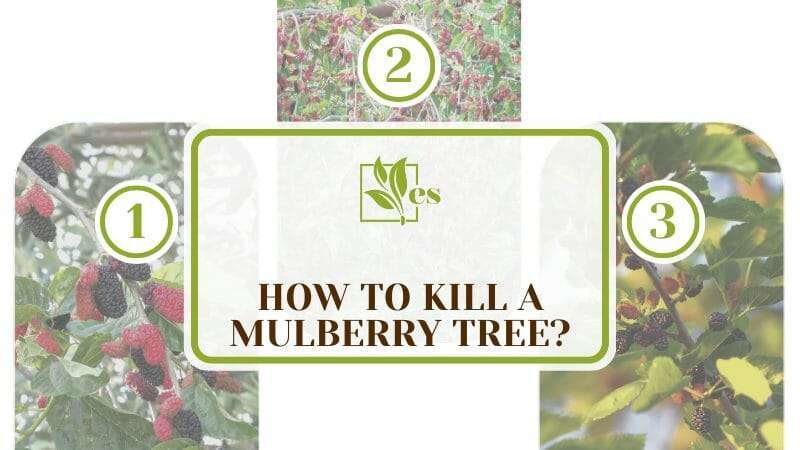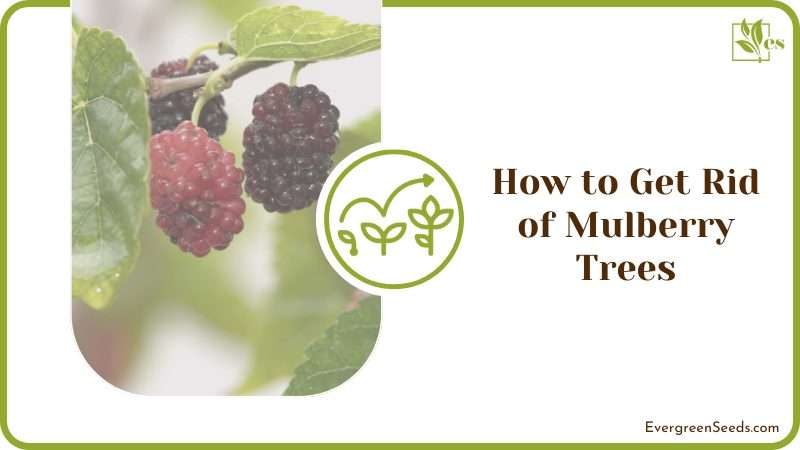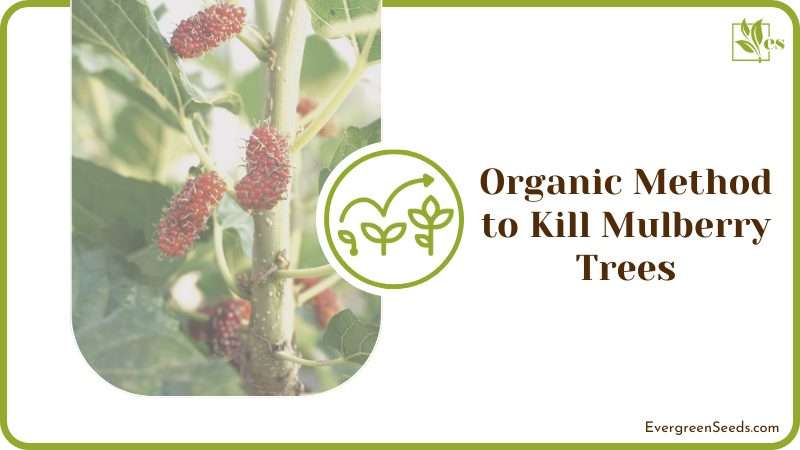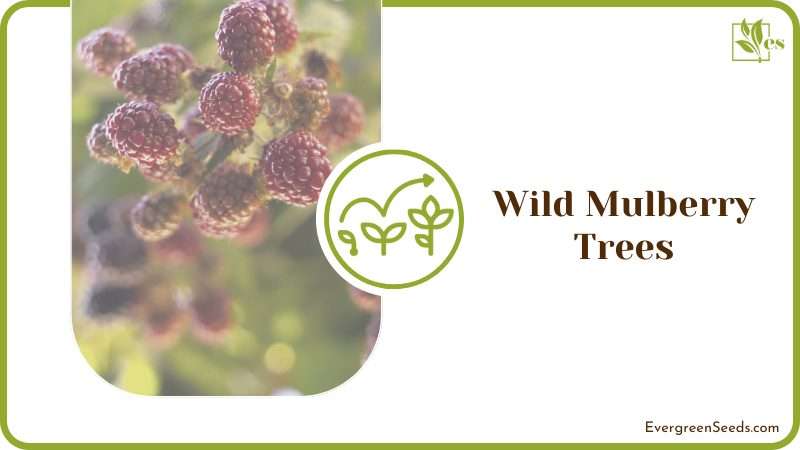It may be necessary to kill a mulberry tree if you have one threatening your home’s foundation or creating a walking hazard in your yard.

Mulberry trees of the Morus genus have shallow, invasive roots that can not only come to the surface but also undermine the soil beneath your house causing dire consequences. We consulted professional arborists to find the best ways to deal with them.
In this article, you will find great ideas to remedy bad situations by removing the tree and halting future root growth.
JUMP TO TOPIC
Why remove invasive mulberry tree roots
Male mulberry trees produce large amounts of pollen that pose health issues for allergy sufferers. Some North American cities have actually banned planting them for that reason.
Mulberry trees love water and will reach out and squeeze through small cracks and openings in utility pipes, sewer systems, and irrigation systems. Although foundation problems can be caused by mulberry trees, it is often not from the roots penetrating the foundation material that is the culprit.
Typically, the roots affect the strength of the soil below the foundation. Buckling and warping under and around the foundation can result from the soil subsidence created by the invasive roots.
White mulberry (M. alba), was introduced to the eastern United States in the late 1800s to feed silkworms that almost exclusively eat mulberry leaves. The silk industry was short-lived, but the mulberry remained, in overabundance.
This species, originally from China, is now considered invasive and can be found growing feral. There are copiousness numbers of the hybrid from the white mulberry and the native red mulberry in the wild.
How to get rid of mulberry trees
When mulberries are grown in the wrong place or become a nuisance in your yard, they ought to go. Killing the shallow roots is one way to get rid of them. However, the entire root system will need to be removed or the tree will grow back. You should first cut the entire tree down to the ground.

The surest way to get rid of a mulberry tree is to dig it up completely. However, to save some hard labor, you can use chemical treatment instead. From May to September, when the trees grow foliage, cut the tree at ground level. Any small saplings that grow, should be dug up. You can also try to pull the tree with a rope and remove the roots as well.
Then, apply a concentrated, non-selective herbicide like glyphosate to the stump immediately after the tree is cut down. Cover the entire cut surface of the stumps with the herbicide using a sprayer or paintbrush. Do this over two years as mulberry trees have multiple rooting points.
Another way to get rid of mulberry tree roots
If you have an area where you cannot remove the tree, such as immediately next to a fence or a building, there is another way of killing mulberry trees and their roots using floral tubes. First, carefully fill the floral tubes with a suitable glyphosate product. Two such products are Bayer Advanced Brush Killer Plus or Roundup Brush Killer. It’s recommended that you wear gloves for this step.
The next step is to make a cut on a small branch that does not have a leaf or fork more than an inch from the cut. Install the tube carefully over the end of the branch so that the chemical is not forced out of the tube. Get as close to the main trunk as possible with this process. If you cannot get close, it’s best to use two or three tubes on several branches.
Results should be visible in a few days with dried leaves evident and the tree clearly looking poorly. The method prevents over-spray and the unintentional death of neighboring plants. Multiple tubes can be used to kill mulberry trees up to five inches in diameter. Trim the trees out once they are dead.
Organic method to kill mulberry trees
If you choose not to use a chemical treatment, no fear. To rid yourself of a mulberry tree problem, there are organic methods you can try. Homemade weed killers like white vinegar in a spray bottle can be used in place of herbicides. Or, you can treat the stump with rock salt.

First, the mulberry tree will need to be cut down to the ground in the same way you would do with the systemic herbicide method. Then use undiluted white vinegar to coat the stump. Several applications will be needed on a warm, dry day to kill the roots and destroy them. Also, spray any leafy shoots that grow up as they supply the roots with nutrition.
When rock salt is applied, it absorbs the water that the roots of the tree normally would. In that way, drought conditions are created, having a weed killer effect. Toxic levels of the salt build up in the mulberry tree roots as they are absorbed. To apply the salt to the stump, drill 12” deep holes an inch in diameter and pack them with rock salt.
Preventative steps for mulberry root problems
Mulberry tree roots are attracted to leaks in plumbing lines and sprinkler systems. They also will move toward the wet areas around your foundation created by rain gutters and downspouts. Poor grading around your home will also cause water to sit. If you pay attention to these issues and remedy them, mulberry tree root growth will not be encouraged.
Choosing a location away from sidewalks and driveways to plant a mulberry tree is the best preventative step. These trees are cultivated for their dense branches and leaf growth. They made ideal shade and windbreak trees. The density of the above-ground growth is matched by root systems that can dominate the soil in the area of the tree.
Some arborists say that there are no bad trees, only poor locations. Bird and berry droppings from a mulberry tree dictate that it should have space further from the house, septic systems, and irrigation systems. Also, avoid planting them where you park your car as they create purple stains on vehicles.
Wild mulberry trees
It’s thought that Morus rubra is native to North America. A few of the other Morus species are considered to have naturalized there. You can find mulberry trees growing feral in natural areas as many of them can tolerate soils with pH up to 8.5. Their fruit quality is usually poor though.

White mulberry (Morus alba) is native to South Asia but grows across Europe, Southern Africa, South America, and North America. It is regarded as an invasive species in both Brazil and the United States.
White mulberry trees invade forests, urban lots, roadsides, old fields, and other disturbed areas. Unfortunately, they tend to displace native species.
As wild mulberry fruit is a favorite of birds, the seeds are spread widely and the trees are rapidly distributed throughout forests and forest edges. Mulberry leaves are nutritious and used for livestock feed supplements.
The berries are very tasty and nutritional with high levels of potassium, fiber, immune system stimulants, and antioxidant properties. For that reason, mulberry fruit has been commonly used in folk medicine and allowed to grow in places where they might not be best suited.











